Contents
Stem Cell Therapy for Osteoarthritis in Germany: A Comprehensive Guide
Germany has emerged as a leading destination for innovative medical treatments, and stem cell therapy for osteoarthritis is at the forefront of its regenerative medicine offerings. This advanced treatment provides hope for patients seeking to alleviate chronic joint pain, improve mobility, and potentially delay or avoid joint replacement surgery.
With its stringent quality standards, cutting-edge research, and world-class medical facilities, Germany attracts patients from across the globe. This guide provides a detailed overview of what to expect when considering Osteoarthritis Stem Cell Treatment in Germany, from the science behind the therapy to the costs and leading clinics.
Key Takeaways
What Is Stem Cell Therapy for Osteoarthritis?
Stem cell therapy for osteoarthritis is a regenerative medical treatment that utilizes the body's own natural healing mechanisms to repair damaged joint tissues. It involves harvesting a patient's stem cells, concentrating them, and then injecting them directly into the affected joint, such as the knee, hip, or shoulder, to reduce inflammation and promote tissue regeneration.
Osteoarthritis is a degenerative joint disease characterized by the breakdown of cartilage, the smooth, rubbery tissue that cushions the ends of bones. This deterioration leads to pain, stiffness, and reduced mobility. Traditional treatments like pain medication, physical therapy, or corticosteroid injections primarily manage symptoms. Stem cell therapy, however, aims to address the root cause of the problem.
The therapy leverages mesenchymal stem cells (MSCs), which are multipotent cells capable of differentiating into various cell types, including chondrocytes (cartilage cells). When injected into an osteoarthritic joint, these stem cells can:
Are You a Good Candidate for Stem Cell Therapy?
Ideal candidates for stem cell therapy are typically individuals in the earlier to moderate stages of osteoarthritis who are seeking an alternative to major surgery. A thorough evaluation by a specialist in Germany will determine your suitability based on your specific condition, age, and overall health.
While the potential of stem cell therapy is exciting, it's not a suitable solution for everyone. A comprehensive medical evaluation, including a physical examination and imaging tests like MRI or X-ray, is crucial. Generally, good candidates for this treatment include those who:
Conversely, individuals with very advanced, "bone-on-bone" osteoarthritis, severe joint deformity, or certain medical conditions may not be ideal candidates.
The Stem Cell Therapy Procedure in Germany: A Step-by-Step Overview
The procedure for osteoarthritis stem cell treatment in Germany is a minimally invasive, outpatient process that is typically completed within a few hours. It involves three main stages: the harvesting of your stem cells, the processing and concentration of these cells in a state-of-the-art lab, and their precise injection into the affected joint.
German clinics adhere to a meticulous and patient-centric process to ensure the highest standards of safety and efficacy.
All Inclusive Osteoarthritis Stem Cell Treatment Packages in Germany
Explore Stem Cell Therapy for Osteoarthritis Packages in Germany, where you can find low-cost options from reliable clinics. These packages are chosen to give you great care without stretching your budget. Check out our listings and discover the perfect package that meets your needs and fits your budget.
`Cost of Stem Cell Treatment for Osteoarthritis in Germany
Stem cell treatment for osteoarthritis in Germany is a popular option for people looking for advanced, non-surgical relief. Many clinics in Germany use modern techniques and high-quality care to help reduce joint pain and improve mobility. The treatment often involves using the patient’s own stem cells to repair damaged tissue in the joints. Patients choose Germany not only for its medical expertise but also for the professional care and comfort provided throughout the treatment process.
Stem Cell Therapy for Osteoarthritis Centers Cost Comparison in Germany
| Provider | Procedure | Price |
|---|---|---|
| Dr. Med. Markus Klingenberg - Osteoarthritis Stem Cell Treatment in Germany | Stem Cell Therapy for Osteoarthritis, Stem Cell Therapy | $2750 |
Stem Cell Therapy for Osteoarthritis Cost Comparison in Germany
| Country | Procedure | Price |
|---|---|---|
| United States | Stem Cell Therapy for Osteoarthritis, Stem Cell Therapy | $35000 |
Top Osteoarthritis Stem Cell Treatment in Germany Hospitals
Our partner clinics offer Osteoarthritis Stem Cell Therapy in Germany, providing updated treatments in modern facilities. These trusted centers focus on great care and skilled doctors to support your health needs. Explore below to find the right clinic for your stem cell therapy journey.
Watch Informative Video about Osteoarthritis Stem Cell Treatment in Germany
Discover helpful videos about Stem Cell Therapy for Osteoarthritis in Germany. These clips will help you understand the process, what to expect, and tips for recovery. They’re here to support you and make you feel ready for your treatment. Check out the videos below for valuable insights!
Stem Cell Treatment for Osteoarthritis in Germany: Testimonials from Real Patients
Check out real patient stories about Stem Cell Therapy for Osteoarthritis in Germany. Reviews from Google and Trustpilot give helpful insights into the treatment and care you can expect!
FAQs about Osteoarthritis Stem Cell Treatment in Germany
1. Is stem cell therapy for osteoarthritis painful?
The procedure is generally well-tolerated. Local anesthesia is used during both the harvesting and injection processes to minimize discomfort. You may experience some mild soreness or swelling at the harvesting and injection sites for a few days, which can be managed with over-the-counter pain relievers.
2. How long does it take to see results?
While some patients report initial pain relief within a few weeks due to the anti-inflammatory effects, the full regenerative benefits can take 3 to 6 months to manifest as new tissue is formed. Improvements can continue for up to a year.
3. Is the treatment covered by insurance?
Currently, most insurance providers consider stem cell therapy for osteoarthritis to be an elective or experimental treatment and do not cover the costs. It's advisable to check directly with your insurance company.
4. How many treatments will I need?
For many patients, a single treatment is sufficient to provide significant and long-lasting relief. However, in some cases of more advanced osteoarthritis, a second treatment may be recommended after a year or two to enhance the results.
5. What are the risks or side effects?
Since the therapy uses your own cells, the risk of rejection or an allergic reaction is virtually nonexistent. The primary risks are those associated with any injection procedure, such as a small chance of infection, bleeding, or nerve irritation at the injection site. These are rare when the procedure is performed by an experienced specialist in a sterile environment.
6. How long is the recovery period?
Recovery is minimal. Patients are typically encouraged to rest the joint for 24-48 hours and then begin a gradual return to normal activities. A personalized physical therapy program may be recommended to maximize the benefits of the treatment.
7. Why choose Germany for this treatment?
Germany offers a unique combination of high medical standards, advanced technology, experienced specialists, and a strong regulatory framework. For international patients, it represents access to world-class care at a more competitive price point than in many other Western countries.
How Effective is Stem Cell Therapy for Knee Osteoarthritis in Germany?
Knee osteoarthritis (OA) is a debilitating condition affecting millions worldwide, leading to pain, stiffness, and reduced mobility. As traditional treatments often focus on managing symptoms rather than addressing the root cause, many individuals seek innovative solutions. Stem cell therapy has emerged as a hopeful option, particularly in countries like Germany, which are at the forefront of regenerative medicine. This blog post explores the effectiveness of stem cell therapy for knee osteoarthritis in Germany, delving into how it works, its benefits, potential risks, and what patients can expect. We aim to answer common questions and provide a comprehensive overview for those considering this advanced treatment. What is Stem Cell Therapy for Knee Osteoarthritis? "Stem cell therapy for knee osteoarthritis involves injecting specialized stem cells into the affected joint to promote tissue repair, reduce inflammation, and alleviate pain." Stem cell therapy is a cutting-edge regenerative medicine approach that utilizes the body's own healing capabilities. For knee osteoarthritis, it typically involves extracting stem cells, often from the patient's bone marrow or adipose (fat) tissue, processing them, and then injecting them directly into the damaged knee joint. These stem cells possess unique properties, including the ability to differentiate into various cell types, such as cartilage cells (chondrocytes), and to release growth factors and anti-inflammatory substances. The goal is to stimulate the natural regeneration of damaged cartilage, reduce inflammation, and thereby improve joint function and reduce pain associated with osteoarthritis. This approach is considered minimally invasive compared to surgical interventions like knee replacement. How Does Stem Cell Therapy Work for Knee Osteoarthritis? "Stem cells work by regenerating damaged cartilage, reducing inflammation, and modulating the immune response within the knee joint, leading to pain relief and improved function." The mechanism of action for stem cell therapy in knee osteoarthritis is multi-faceted. When injected into the knee, mesenchymal stem cells (MSCs)—the most commonly used type—can sense the damaged environment. They release various bioactive molecules that help to: Reduce Inflammation: Stem cells have strong anti-inflammatory properties, which can help calm the inflamed joint tissues characteristic of osteoarthritis. Modulate Immune Response: They can regulate the immune system, preventing it from contributing further to cartilage degradation. Promote Tissue Regeneration: While direct differentiation into cartilage cells is a complex process, stem cells primarily work by signaling to existing cells to promote their repair and regeneration. They secrete growth factors and cytokines that encourage the body's own cells to repair damaged tissue and potentially lay down new cartilage-like matrix. Alleviate Pain: By reducing inflammation and promoting tissue healing, stem cells indirectly contribute to significant pain reduction. This combination of effects aims to slow the progression of osteoarthritis, improve joint mechanics, and enhance the patient's quality of life. What are the Benefits of Stem Cell Therapy for Knee Osteoarthritis? "Benefits of stem cell therapy for knee osteoarthritis often include significant pain reduction, improved joint function, and the potential to delay or avoid knee replacement surgery." Patients undergoing stem cell therapy for knee osteoarthritis in Germany often report a range of benefits. One of the most significant advantages is the potential for substantial pain relief, which can allow individuals to reduce their reliance on pain medications. Furthermore, many patients experience improved joint mobility and function, making everyday activities easier and enhancing their overall quality of life. For individuals who are not yet candidates for total knee replacement or wish to avoid it, stem cell therapy offers a less invasive alternative that may postpone or even negate the need for surgery. The procedure is typically outpatient, leading to a quicker recovery time compared to traditional surgical interventions. Is Stem Cell Therapy for Knee Osteoarthritis Safe in Germany? "Yes, stem cell therapy for knee osteoarthritis in Germany is generally considered safe, with clinics adhering to strict medical standards and using autologous (patient's own) cells to minimize risks." Germany has a highly regulated healthcare system, and clinics offering stem cell therapy operate under stringent medical guidelines. The use of autologous stem cells, meaning cells harvested from the patient's own body, significantly reduces the risk of immune rejection or allergic reactions. As with any medical procedure involving injections, there is a minor risk of infection at the injection site or temporary swelling and discomfort. However, serious adverse events are rare. German clinics prioritize patient safety, often performing thorough pre-treatment evaluations to ensure suitability and closely monitoring patients post-procedure. What is the Success Rate of Stem Cell Therapy for Knee Osteoarthritis in Germany? "The success rate of stem cell therapy for knee osteoarthritis in Germany is promising, with many studies and clinics reporting significant improvement in pain and function for 70-80% of patients, though individual results can vary." While individual outcomes can vary based on factors such as the severity of the osteoarthritis, the patient's overall health, and the type of stem cells used, many German clinics and research studies report encouraging success rates. Some clinical trials indicate that a significant percentage of patients, often ranging from 70% to 80%, experience clinically meaningful improvements in pain and functional scores after stem cell therapy. These improvements can last for extended periods, potentially delaying the need for more invasive procedures. It is important for patients to have realistic expectations and to discuss potential outcomes with their treating physician. Who is a Good Candidate for Stem Cell Therapy for Knee Osteoarthritis? "Good candidates for stem cell therapy for knee osteoarthritis typically include individuals with mild to moderate osteoarthritis who have not found sufficient relief from conservative treatments but wish to avoid or delay surgery." Ideal candidates for stem cell therapy for knee osteoarthritis are usually those in the earlier to moderate stages of the disease (e.g., Kellgren-Lawrence grades 1-3). Patients with severe, "bone-on-bone" osteoarthritis may have less favorable outcomes, though some still experience benefits. Other factors that make a person a good candidate include: Persistent knee pain and functional limitations. Failure to respond adequately to conventional non-surgical treatments like physical therapy, medication, or corticosteroid injections. Overall good health, without active infections or certain underlying medical conditions that might contraindicate the procedure. Realistic expectations about the potential outcomes of the therapy. A comprehensive evaluation by a specialist in Germany will determine the suitability of the treatment for each individual case. What Types of Stem Cells Are Used for Knee Osteoarthritis in Germany? "In Germany, the most common types of stem cells used for knee osteoarthritis are autologous mesenchymal stem cells (MSCs) derived from bone marrow aspirate concentrate (BMAC) or adipose (fat) tissue." German clinics predominantly use autologous stem cells for knee osteoarthritis treatment. The two primary sources are: Bone Marrow Aspirate Concentrate (BMAC): This involves extracting a small amount of bone marrow, typically from the patient's hip bone, concentrating the stem cells, and then injecting the concentrate into the knee. Bone marrow is a rich source of MSCs. Adipose-Derived Stem Cells (ADSCs): These stem cells are obtained from the patient's own fat tissue, usually through a mini-liposuction procedure. Adipose tissue is another abundant source of MSCs, and the harvesting procedure can be less invasive than bone marrow aspiration. Both sources have shown promise in clinical applications for osteoarthritis, and the choice between them often depends on the clinic's expertise, the patient's condition, and the doctor's recommendation. What is the Procedure for Stem Cell Therapy for Knee Osteoarthritis? "The stem cell therapy for knee osteoarthritis procedure typically involves harvesting stem cells from the patient's bone marrow or fat, processing them, and then injecting the concentrated cells into the affected knee, usually on an outpatient basis." The procedure generally follows these steps: Harvesting: A small amount of bone marrow is typically aspirated from the patient's iliac crest (hip bone) or adipose tissue is collected through a mini-liposuction from the abdomen or thigh. Processing: The collected sample is then processed in a specialized laboratory to concentrate the stem cells. This often involves centrifugation to separate the stem cells from other components. Injection: The concentrated stem cell solution is then carefully injected into the affected knee joint. This injection is often performed under ultrasound or fluoroscopic guidance to ensure precise placement. Post-Procedure Care: Patients typically go home the same day. Recovery involves a period of rest, followed by a gradual return to activity, often with physical therapy. The entire procedure is minimally invasive and generally well-tolerated. What is the Recovery Time After Stem Cell Therapy for Knee Osteoarthritis? "The recovery time after stem cell therapy for knee osteoarthritis is generally short, with most patients resuming light activities within a few days and gradually increasing their activity level over several weeks to months." One of the significant advantages of stem cell therapy is its relatively quick recovery period compared to surgical procedures. Most patients can walk and bear weight on the treated knee shortly after the injection. Immediate Post-Procedure: Some mild soreness, swelling, or bruising at the injection site is common for a few days. First Few Weeks: Patients are typically advised to rest and avoid strenuous activities. Light walking and gentle exercises may be encouraged. Weeks to Months: Over the next several weeks to months, as the stem cells begin to work and tissue regeneration is promoted, patients gradually increase their activity levels under the guidance of their physician or physical therapist. Full benefits may become apparent over several months as the healing process unfolds. The specific recovery timeline can vary based on the individual and the severity of their condition. Are There Any Side Effects of Stem Cell Therapy for Knee Osteoarthritis? "Side effects of stem cell therapy for knee osteoarthritis are generally mild and temporary, including localized pain, swelling, or bruising at the harvest and injection sites, with serious complications being rare." Because autologous stem cells (from the patient's own body) are used, the risk of adverse reactions is minimal. The most common side effects are usually related to the harvesting and injection sites: Pain and Discomfort: Mild pain, soreness, or bruising at the site where stem cells were harvested (e.g., hip or abdomen) and at the injection site in the knee. Swelling: Temporary swelling around the knee joint. Infection: As with any injection, there's a very low risk of infection, which clinics mitigate by using sterile techniques. These side effects are typically temporary and resolve within a few days to a week. Serious complications like nerve damage or significant bleeding are exceedingly rare. How Long Do the Effects of Stem Cell Therapy for Knee Osteoarthritis Last? "The effects of stem cell therapy for knee osteoarthritis can last for a significant period, with many patients reporting sustained improvement in pain and function for 1 to 3 years or even longer, though results vary." The longevity of the benefits from stem cell therapy can vary among individuals. While it's not considered a permanent "cure" for osteoarthritis, many patients experience long-lasting relief. Studies and clinical observations suggest that significant improvements in pain and function can endure for one to three years, and in some cases, even longer. The goal is to slow the progression of the disease and provide extended relief, potentially delaying or avoiding the need for joint replacement surgery. The actual duration of effectiveness can depend on factors such as the initial severity of the osteoarthritis, the patient's lifestyle, and adherence to post-treatment recommendations. What is the Cost of Stem Cell Therapy for Knee Osteoarthritis in Germany? "The cost of stem cell therapy for knee osteoarthritis in Germany typically ranges from €14,500 to €20,800, depending on the clinic, the specific type of stem cell used, and the extent of the treatment required." The cost of stem cell therapy for knee osteoarthritis in Germany can vary based on several factors, including the reputation and location of the clinic, the experience of the medical team, the type of stem cells utilized (e.g., bone marrow-derived vs. adipose-derived), and whether additional treatments or follow-up appointments are included in the package. Patients should always request a detailed breakdown of costs from the clinic during their initial consultation. While it can be a significant investment, many patients consider it worthwhile given the potential for pain relief and improved quality of life without invasive surgery. Are German Clinics Accredited for Stem Cell Therapy? "Many German clinics offering stem cell therapy for knee osteoarthritis are highly accredited and adhere to rigorous international and national medical standards, ensuring high-quality care and patient safety." Germany is renowned for its high standards in healthcare, and many clinics specializing in stem cell therapy are accredited by national and international bodies. These accreditations ensure that the clinics meet strict quality control measures, patient safety protocols, and ethical guidelines for regenerative medicine procedures. Patients considering treatment in Germany can research specific clinic accreditations and certifications to ensure they choose a reputable facility. This commitment to quality contributes to Germany's reputation as a leading destination for medical tourism, particularly for advanced treatments like stem cell therapy. Does Stem Cell Therapy Regrow Cartilage in the Knee? "While stem cell therapy can contribute to the regeneration of cartilage-like tissue, its primary mechanism involves promoting a healthier joint environment, reducing inflammation, and potentially slowing cartilage degradation, rather than complete regeneration of original cartilage." The ability of stem cell therapy to fully "regrow" original, healthy hyaline cartilage in the knee is an area of ongoing research. While stem cells have the potential to differentiate into chondrocytes (cartilage-producing cells), the regeneration often results in a type of fibrocartilage, which is a fibrous, repair tissue, rather than the highly organized hyaline cartilage. However, even the formation of fibrocartilage, coupled with the anti-inflammatory and tissue-modulating effects of stem cells, can significantly improve joint function, reduce pain, and slow the progression of osteoarthritis. The focus is more on creating a more favorable environment for the knee's natural healing processes and preserving existing cartilage. Stem Cell Therapy vs. Knee Replacement Surgery for Osteoarthritis "Stem cell therapy is a minimally invasive option aimed at regenerating tissue and reducing inflammation, while knee replacement surgery is an invasive procedure that replaces damaged joint components, typically reserved for severe osteoarthritis." Choosing between stem cell therapy and knee replacement surgery depends heavily on the severity of the osteoarthritis and individual patient needs. Stem Cell Therapy: This is a less invasive procedure, often performed as an outpatient treatment. It aims to harness the body's natural healing processes, potentially regenerating damaged tissue, reducing inflammation, and alleviating pain. It's often considered for mild to moderate cases, or for patients who wish to avoid or delay surgery. Recovery is quicker, and it preserves the natural joint. Knee Replacement Surgery: This is a major surgical procedure where the damaged parts of the knee joint are removed and replaced with artificial components. It is typically reserved for severe, end-stage osteoarthritis where conservative treatments no longer provide relief. While highly effective in reducing pain and restoring function, it involves a longer recovery period, significant rehabilitation, and potential surgical risks. For many, stem cell therapy offers a bridge, providing relief and improving quality of life before joint replacement becomes the only viable option. What Should I Ask a Clinic in Germany About Stem Cell Therapy? "When considering stem cell therapy for knee osteoarthritis in Germany, you should ask about the specific type of stem cells used, the clinic's experience and success rates, the detailed treatment plan, potential costs, and post-procedure care." To make an informed decision about stem cell therapy for knee osteoarthritis in Germany, it's essential to ask thorough questions: Specifics of the Procedure: What type of stem cells will be used (e.g., bone marrow, adipose)? How are they harvested and processed? Is imaging guidance (ultrasound, fluoroscopy) used during injection? Clinic's Experience and Success: How many knee osteoarthritis patients has the clinic treated with stem cells? What are their reported success rates? Can they provide patient testimonials or outcome data? Treatment Plan: What does the entire treatment protocol entail, including pre-treatment evaluations, the procedure itself, and post-procedure follow-up? Costs: Obtain a clear and detailed breakdown of all costs involved, including the procedure, consultations, follow-up, and any necessary medications. Are there any hidden fees? Risks and Side Effects: A comprehensive explanation of potential risks and common side effects. Post-Procedure Care: What are the recommendations for activity restriction, physical therapy, and long-term follow-up? Asking these questions will help ensure transparency and build confidence in your chosen clinic. CTA: Ready to explore innovative solutions for your knee osteoarthritis? Visit PlacidWay to learn more about stem cell therapy options in Germany and connect with highly-rated clinics that can help you regain your mobility and improve your quality of life.
What is the Success Rate of Stem Cell Therapy for Hip Osteoarthritis in Germany?
Hip osteoarthritis is a degenerative joint disease that causes pain, stiffness, and reduced mobility, significantly impacting quality of life. Traditional treatments range from medication and physical therapy to surgical interventions like total hip replacement. However, newer, less invasive options are continually being explored, with stem cell therapy emerging as a promising alternative. Germany has established itself as a leading destination for advanced medical treatments, including regenerative medicine for conditions like hip osteoarthritis. This blog post will delve into the effectiveness of stem cell therapy for hip osteoarthritis in Germany, addressing common questions and providing detailed insights to help you understand this innovative treatment. What is Stem Cell Therapy for Hip Osteoarthritis? "Stem cell therapy for hip osteoarthritis involves injecting a patient's own (autologous) stem cells, typically derived from bone marrow or fat tissue, directly into the affected hip joint to promote cartilage regeneration and reduce inflammation." Stem cell therapy is a groundbreaking approach in regenerative medicine that harnesses the body's natural healing capabilities. For hip osteoarthritis, mesenchymal stem cells (MSCs) are often used. These are multipotent cells that have the ability to differentiate into various cell types, including chondrocytes (cartilage cells), and also possess strong anti-inflammatory and immunomodulatory properties. The goal of injecting these cells into the arthritic hip joint is to repair damaged cartilage, reduce pain, and improve the overall function of the joint, potentially delaying or even avoiding the need for invasive surgery like a hip replacement. The process typically involves extracting the stem cells from the patient, processing them to concentrate the therapeutic cells, and then injecting them into the hip. How Do Stem Cells Help with Hip Osteoarthritis? "Stem cells help with hip osteoarthritis by promoting the regeneration of damaged cartilage, reducing inflammation, modulating the immune response, and releasing growth factors that support tissue repair." When injected into the hip joint, mesenchymal stem cells exert several beneficial actions. Firstly, they have the potential to differentiate into new cartilage cells, directly contributing to the repair and regeneration of the worn-down articular cartilage. Secondly, stem cells release various growth factors and cytokines that have powerful anti-inflammatory effects. This helps to reduce the pain and swelling commonly associated with hip osteoarthritis. Thirdly, they can modulate the local immune response within the joint, creating a more favorable environment for healing. Finally, stem cells can stimulate the body's own existing cells to participate in the repair process, fostering a more holistic healing response. This multi-faceted action makes stem cell therapy an attractive option for addressing the underlying pathology of osteoarthritis rather than just managing symptoms. What is the Success Rate of Stem Cell Therapy for Hip Osteoarthritis in Germany? "While specific, unified statistical data for stem cell therapy solely for hip osteoarthritis across all German clinics is still evolving, many reputable clinics in Germany report success rates for general arthritis treatment, including hip, knee, and shoulder, ranging from 70% to 80% in terms of pain reduction and functional improvement." The success of stem cell therapy for hip osteoarthritis can be measured by various factors, including pain reduction, improved mobility, and the delay or avoidance of hip replacement surgery. While the field is still considered somewhat experimental by some conventional medical bodies, many German clinics specializing in regenerative medicine have gathered extensive clinical experience. They often highlight significant improvements in patient-reported outcomes. It's crucial to understand that individual results can vary based on the severity of the osteoarthritis, the patient's overall health, the specific stem cell source used (e.g., bone marrow, adipose tissue), and the treatment protocol. German clinics are known for their high standards and often employ sophisticated techniques for cell isolation and administration, contributing to their reported positive outcomes. Patients frequently report a noticeable decrease in pain and an increased ability to perform daily activities. Are Dental Implants in Turkey Safe? "Yes, dental implants in Turkey are generally safe, as many clinics are internationally accredited and follow high standards of care." Turkey has become a popular destination for dental tourism, offering competitive prices for high-quality procedures. Many dental clinics in Turkey adhere to strict international standards and regulations, often holding accreditations from organizations like the Joint Commission International (JCI). These accreditations indicate a commitment to patient safety, quality of care, and infection control. Furthermore, Turkish dentists providing dental implant procedures are often highly trained and experienced, with many having received education and training from prestigious international institutions. However, as with any medical procedure abroad, it is crucial to research the clinic and the dentist thoroughly, check for patient reviews, and verify their credentials to ensure a safe and successful outcome. What are the Typical Costs of Stem Cell Therapy for Hip Osteoarthritis in Germany? "The cost of stem cell therapy for hip osteoarthritis in Germany typically ranges from €7,000 to €15,000, depending on the clinic, the type of stem cells used, the number of injections required, and any additional related treatments or post-procedure care." Stem cell therapy is a specialized and often personalized treatment, and its cost can vary significantly. Factors influencing the price include the source of the stem cells (e.g., bone marrow-derived stem cells or adipose-derived stem cells), the complexity of the extraction process, the laboratory processing involved, and the number of injections needed to achieve the desired therapeutic effect. Some clinics may offer comprehensive packages that include initial consultations, diagnostic imaging, the procedure itself, and follow-up appointments, while others may itemize each service. Patients considering this treatment should inquire about a detailed breakdown of all associated costs to avoid surprises. While the initial investment might seem substantial, many patients consider it a worthwhile alternative to more invasive and costly surgical procedures like hip replacement, which often entail lengthy rehabilitation and potential complications. How Long Does the Stem Cell Therapy Procedure for Hip Osteoarthritis Take? "The stem cell therapy procedure for hip osteoarthritis itself, from cell extraction to injection, typically takes a few hours, though the overall process including initial consultations and recovery can span several days." The exact duration depends on the source of the stem cells. If adipose-derived stem cells are used, a mini-liposuction procedure is performed to extract fat tissue, which is then processed to concentrate the stem cells. This part of the procedure can take about 1-2 hours. For bone marrow-derived stem cells, bone marrow aspiration is performed, usually from the hip bone, which also takes a similar amount of time. The concentrated stem cells are then immediately injected into the affected hip joint, a procedure that is relatively quick. Patients usually remain in the clinic for observation for a short period after the injection. While the actual procedure is relatively short, patients should factor in time for initial assessments, potential pre-procedure preparations, and a brief recovery period. Many patients can return to light activities within a day or two, though a full recovery and assessment of the treatment's effects will take weeks to months. What Should I Expect During the Stem Cell Therapy Consultation in Germany? "During the stem cell therapy consultation in Germany, you can expect a thorough medical evaluation, including a review of your medical history, physical examination, and assessment of imaging (like X-rays or MRI), followed by a detailed discussion of your treatment options, expected outcomes, and costs." A comprehensive consultation is a crucial first step in stem cell therapy for hip osteoarthritis. The German clinics are known for their meticulous approach to patient care. During this consultation, the medical team will take a detailed medical history, including your osteoarthritis symptoms, previous treatments, and overall health. They will likely perform a physical examination to assess your hip joint's range of motion, stability, and tenderness. Imaging studies, such as recent X-rays or an MRI of your hip, will be reviewed to determine the severity of your osteoarthritis and identify any other underlying issues. The doctor will then explain the different stem cell therapy options available, discuss the potential benefits and risks, and outline a personalized treatment plan tailored to your specific condition. This is also the time to ask any questions you have about the procedure, recovery, and financial aspects. Are There Any Risks or Side Effects of Stem Cell Therapy for Hip Osteoarthritis? "Stem cell therapy for hip osteoarthritis is generally considered safe, with potential risks being minimal and often associated with the injection procedure itself, such as temporary pain, swelling, or bruising at the injection site, and a very low risk of infection." As with any medical procedure, there are potential risks, though stem cell therapy, especially when using autologous cells (from the patient's own body), carries a very low risk of immune rejection or allergic reactions. The most common side effects are mild and temporary, including localized pain, swelling, or bruising at the site of cell extraction (e.g., hip bone for bone marrow, or abdomen/thigh for fat) and at the injection site in the hip joint. There is also a small risk of infection, as with any injection. Reputable German clinics adhere to stringent sterilization protocols to minimize this risk. Serious complications are rare, but patients should always discuss all potential risks with their doctor before undergoing treatment. What Kind of Stem Cells Are Used for Hip Osteoarthritis? "For hip osteoarthritis, mesenchymal stem cells (MSCs) are primarily used, which can be harvested from the patient's own bone marrow (bone marrow aspirate concentrate - BMAC) or adipose tissue (fat)." Mesenchymal stem cells are favored due to their ability to differentiate into cartilage cells, suppress inflammation, and secrete growth factors beneficial for tissue repair. Bone Marrow-Derived Mesenchymal Stem Cells (BM-MSCs): These are collected from the patient's bone marrow, usually from the posterior iliac crest (hip bone), through a procedure called bone marrow aspiration. The aspirate is then processed to concentrate the MSCs before injection. BM-MSCs have been extensively studied and are widely used in orthopedic regenerative medicine. Adipose-Derived Stem Cells (ADSCs): These stem cells are found in abundance in fat tissue. They are obtained through a mini-liposuction procedure, typically from the abdomen or thigh. ADSCs are often preferred due to the relative ease of harvesting a large quantity of cells and their potent regenerative properties. Both sources have shown promising results in treating osteoarthritis, and the choice between them may depend on the clinic's expertise, the patient's specific condition, and the doctor's recommendation. How Effective is Stem Cell Therapy in Reducing Pain from Hip Osteoarthritis? "Stem cell therapy is often effective in significantly reducing pain associated with hip osteoarthritis by targeting inflammation and promoting tissue repair, with many patients reporting substantial pain relief within weeks to months after treatment." Pain relief is one of the primary goals and reported benefits of stem cell therapy for hip osteoarthritis. By introducing stem cells into the joint, the inflammatory environment, which is a major contributor to pain in osteoarthritis, is modulated and reduced. As the stem cells work to repair damaged cartilage and create a healthier joint environment, the mechanical pain stemming from bone-on-bone friction can also decrease. Patients often experience a gradual reduction in pain, leading to improved comfort and a greater ability to participate in daily activities without discomfort. While individual responses vary, the general trend observed in clinical practice is a positive impact on pain levels. Can Stem Cell Therapy Help Avoid Hip Replacement Surgery? "Stem cell therapy for hip osteoarthritis holds the potential to postpone or potentially avoid the need for total hip replacement surgery, especially in earlier stages of the disease, by addressing the underlying cartilage damage and inflammation." For many patients, especially those who wish to avoid major surgery or who are not yet candidates for hip replacement, stem cell therapy offers a viable alternative. By promoting cartilage regeneration and reducing inflammation, the therapy aims to slow down the progression of osteoarthritis and improve joint function, thereby delaying or eliminating the need for a prosthetic joint. While it may not be a permanent solution for every patient, particularly those with very advanced degeneration, it can provide significant relief and extend the life of the natural joint. This can be particularly beneficial for younger patients who might face the prospect of multiple revision surgeries over their lifetime if they opt for a hip replacement at an early age. What is the Recovery Process After Stem Cell Therapy for Hip Osteoarthritis? "The recovery process after stem cell therapy for hip osteoarthritis is typically minimally invasive, involving a short period of rest and limited activity immediately after the procedure, followed by a gradual return to normal activities and often includes a tailored physical therapy program." Immediately after the stem cell injection into the hip, patients are usually advised to rest the joint for a day or two. Some mild soreness or swelling at the injection and extraction sites is common and can be managed with over-the-counter pain relievers. Patients are typically encouraged to gradually increase their activity levels over the following weeks, avoiding strenuous activities or heavy impact on the hip. Many German clinics recommend a personalized physical therapy program to optimize the healing process and improve joint strength and flexibility. The full benefits of the stem cell therapy may take several weeks to months to become apparent as the cells work to regenerate tissue and reduce inflammation. Follow-up appointments are usually scheduled to monitor progress and assess the overall outcome. What are the Long-Term Outcomes of Stem Cell Therapy for Hip Osteoarthritis in Germany? "The long-term outcomes of stem cell therapy for hip osteoarthritis in Germany are continually being studied, with current evidence suggesting sustained pain reduction and functional improvement for several years in many patients, though individual results can vary." While stem cell therapy for osteoarthritis is a relatively newer field compared to traditional treatments, ongoing research and clinical experience in Germany show promising long-term results. Many patients experience lasting relief from pain and improved mobility, potentially for several years. The effectiveness and durability of the results depend on factors such as the severity of the osteoarthritis at the time of treatment, the patient's lifestyle, and adherence to post-procedure recommendations. German clinics often emphasize a holistic approach to joint health, combining stem cell therapy with lifestyle modifications, physical therapy, and nutritional guidance to maximize and prolong the therapeutic benefits. Regular follow-up with the treating physician is important to monitor the long-term effects and address any new concerns. What Other Orthopedic Conditions Can Be Treated with Stem Cells in Germany? "In addition to hip osteoarthritis, stem cell therapy in Germany is also used to treat a range of other orthopedic conditions, including knee arthritis, shoulder arthritis, cartilage defects, tendon injuries, and some cases of osteonecrosis." Germany's expertise in regenerative medicine extends beyond hip osteoarthritis. Stem cell therapy is increasingly applied to various musculoskeletal issues where tissue repair and inflammation reduction are beneficial. This includes: Knee osteoarthritis and cartilage damage: Similar to the hip, stem cells can help regenerate knee cartilage and reduce inflammation. Shoulder osteoarthritis: For degenerative changes in the shoulder joint, stem cells can alleviate pain and improve range of motion. Tendon and ligament injuries: Chronic tendonitis (e.g., Achilles tendinitis, rotator cuff tears) and ligament sprains can benefit from the regenerative properties of stem cells to accelerate healing. Osteonecrosis: In cases where bone tissue dies due to lack of blood supply, stem cells can help regenerate bone and prevent joint collapse. Non-healing bone fractures (Pseudarthrosis): Stem cells can promote bone healing in fractures that fail to unite. This broad application highlights Germany's position at the forefront of regenerative orthopedic medicine. How to Choose a Reputable Clinic for Stem Cell Therapy in Germany? "To choose a reputable stem cell therapy clinics in Germany, look for clinics with international accreditations, highly qualified and experienced orthopedic specialists, transparent communication about treatment plans and costs, positive patient testimonials, and a focus on evidence-based practices." Selecting the right clinic is paramount for a safe and effective stem cell therapy experience. Here are some key considerations: Accreditation and Certification: Look for clinics with national or international accreditations (e.g., KTQ certification in Germany) that signify high standards of quality and patient safety. Expertise of Doctors: Research the qualifications, experience, and specialization of the orthopedic surgeons and regenerative medicine specialists. They should have a strong background in treating hip osteoarthritis and performing stem cell procedures. Transparency: A reputable clinic will be transparent about their treatment protocols, the source of their stem cells, the expected outcomes, and all associated costs. Patient Reviews and Testimonials: Look for authentic patient reviews and success stories to gauge the experiences of others. Technology and Facilities: Consider clinics that utilize advanced technologies for cell processing and sterile facilities. Personalized Treatment Plans: A good clinic will offer a personalized approach, tailoring the treatment to your specific condition and needs. Follow-up Care: Inquire about the post-treatment care and follow-up protocols. By carefully evaluating these factors, you can make an informed decision and choose a clinic that prioritizes your safety and optimal outcomes. Explore PlacidWay for solutions related to medical tourism, healthcare services, or other relevant offerings.
How Does Stem Cell Therapy in Germany Help in Osteoarthritis Treatment?
Osteoarthritis, a widespread chronic condition, primarily affects the cartilage in joints, leading to pain, stiffness, and reduced mobility. For many years, conventional treatments have focused on managing symptoms rather than addressing the underlying cause. However, advancements in regenerative medicine, particularly stem cell therapy, are offering new hope. Germany has emerged as a leading country in the field of stem cell therapy for osteoarthritis, providing cutting-edge treatments that aim to harness the body's natural healing mechanisms to repair damaged tissues and reduce inflammation. This innovative approach seeks to improve the quality of life for individuals suffering from this debilitating joint disease. What is Osteoarthritis and How Does it Affect Joints? "Osteoarthritis is a degenerative joint disease characterized by the breakdown of joint cartilage and underlying bone, leading to pain, stiffness, and swelling, primarily affecting the weight-bearing joints." Osteoarthritis, often referred to as "wear and tear" arthritis, is the most common form of arthritis. It occurs when the protective cartilage on the ends of your bones wears down over time. Cartilage is a firm, slippery tissue that enables nearly frictionless joint motion. In osteoarthritis, this cartilage becomes rough and eventually erodes, causing bones to rub directly against each other. This friction leads to pain, inflammation, swelling, and reduced flexibility in the affected joint. The progression of osteoarthritis can significantly impair a person's ability to perform daily activities, impacting their overall quality of life. Common joints affected include the knees, hips, hands, and spine. What are Stem Cells and Their Role in Regeneration? "Stem cells are unique cells with the ability to self-renew and differentiate into various specialized cell types, playing a crucial role in the body's natural repair and regeneration processes." Stem cells are often called the body's raw materials. They are undifferentiated cells that have two key characteristics: first, they can divide and produce more stem cells (self-renewal); and second, they can develop into many different cell types in the body (differentiation). In the context of regenerative medicine, these properties are invaluable. For osteoarthritis treatment, mesenchymal stem cells (MSCs) are particularly relevant due to their potential to differentiate into cartilage-producing cells (chondrocytes), bone cells (osteoblasts), and fat cells (adipocytes). Beyond differentiation, stem cells also have immunomodulatory and anti-inflammatory properties, meaning they can help reduce inflammation and promote a healing environment within the joint. How Does Stem Cell Therapy Specifically Target Osteoarthritis in Germany? "Stem cell therapy in Germany primarily targets osteoarthritis by injecting autologous stem cells (usually Mesenchymal Stem Cells from bone marrow or fat) directly into the affected joint to promote cartilage regeneration, reduce inflammation, and alleviate pain." In Germany, stem cell therapy for osteoarthritis typically involves harvesting stem cells from the patient's own body, most commonly from bone marrow (Bone Marrow Aspirate Concentrate, BMAC) or adipose tissue (fat). These autologous stem cells are then processed to concentrate the mesenchymal stem cells (MSCs). Once processed, the concentrated stem cells are precisely injected into the osteoarthritic joint. The goal is for these MSCs to either differentiate into new cartilage cells or, more commonly, to exert their therapeutic effects through paracrine signaling. This means they release growth factors and anti-inflammatory molecules that encourage the body's own repair mechanisms, reduce pain, and slow down cartilage degradation. German clinics often employ advanced imaging techniques to ensure the precise placement of the stem cells into the damaged area. What Types of Stem Cells Are Used for Osteoarthritis Treatment in Germany? "For osteoarthritis treatment in Germany, the primary type of stem cells used are Mesenchymal Stem Cells (MSCs), typically harvested from the patient's own bone marrow or adipose (fat) tissue." Mesenchymal Stem Cells (MSCs) are multipotent stromal cells that can differentiate into various cell types, including chondrocytes (cartilage cells), osteoblasts (bone cells), and adipocytes (fat cells). Their multipotent nature and immunomodulatory properties make them ideal candidates for osteoarthritis treatment. Bone Marrow-Derived MSCs (BM-MSCs): These are harvested from the patient's bone marrow, usually from the hip bone. BM-MSCs have a long history of study in regenerative medicine and are known for their ability to promote cartilage and bone repair. Adipose-Derived MSCs (AD-MSCs): These are obtained from the patient's own fat tissue, often through a liposuction-like procedure. AD-MSCs are abundant and relatively easy to harvest, making them a popular choice. In Germany, the focus is generally on using autologous stem cells to minimize the risk of immune rejection or disease transmission, aligning with stringent safety regulations. What Are the Potential Benefits of Stem Cell Therapy for Osteoarthritis? "Potential benefits of stem cell therapy for osteoarthritis include pain reduction, improved joint function and mobility, potential for cartilage regeneration, and a reduced need for more invasive surgeries like joint replacement." Stem cell therapy aims to go beyond just managing symptoms. The proposed benefits are: Pain Reduction: Many patients experience a significant decrease in joint pain, which can lead to a reduced reliance on pain medications. This is often attributed to the anti-inflammatory effects of stem cells. Improved Mobility and Function: By reducing pain and promoting healing, stem cell therapy can help restore a greater range of motion and overall joint function, making daily activities easier. Cartilage Regeneration: While complete regrowth of original hyaline cartilage is challenging, stem cells may promote the formation of new tissue that acts as a scaffold and provides support to the joint. Reduced Inflammation: MSCs possess potent anti-inflammatory properties, which can help to calm the inflamed joint environment characteristic of osteoarthritis. Delay or Avoidance of Surgery: For some patients, stem cell therapy may offer an alternative to surgical interventions, such as total joint replacement, particularly in the earlier stages of the disease. These benefits can vary from person to person, and the long-term effects are still under ongoing research. What Does the Stem Cell Therapy Procedure in Germany Involve? "The stem cell therapy procedure in Germany typically involves a consultation and diagnostic imaging, stem cell harvesting (from bone marrow or fat), processing to concentrate the MSCs, and then precise injection of the stem cells into the affected joint, often guided by imaging." The procedure generally follows several steps: Initial Consultation and Diagnostics: A comprehensive evaluation is conducted, including a medical history review, physical examination, and advanced imaging such as MRI or X-rays to assess the extent of cartilage damage and overall joint health. Stem Cell Harvesting: Depending on the chosen source, either a small amount of bone marrow is extracted from the patient's hip bone (bone marrow aspiration) or adipose tissue is collected through a mini-liposuction procedure. Both procedures are typically performed under local anesthesia. Processing and Concentration: The harvested tissue is then processed in a specialized laboratory to isolate and concentrate the mesenchymal stem cells (MSCs). This often involves centrifugation, which separates the stem cells from other components. Injection: The concentrated stem cell solution is then carefully injected directly into the affected joint. This injection is often guided by ultrasound or fluoroscopy to ensure accurate placement of the stem cells into the damaged area. Post-Procedure Care: Patients are usually monitored for a short period after the injection. Post-procedure instructions may include rest, gentle movement, and avoidance of strenuous activities for a certain time. Physical therapy may also be recommended as part of the recovery process to optimize results. How Long Does the Recovery Process Take After Stem Cell Therapy? "The recovery process after stem cell therapy for osteoarthritis is typically minimal, with most patients experiencing mild soreness for a few days, and a gradual improvement in symptoms over several weeks to months as the stem cells work." Unlike surgical interventions, stem cell therapy is a minimally invasive procedure, leading to a relatively quick initial recovery. Patients can usually return to light activities within a few days. Some common post-injection experiences include: Immediate Post-Procedure: Mild pain, swelling, or bruising at the injection site and the harvest site (if autologous cells were used). These symptoms typically subside within a few days. Weeks 1-4: Patients are often advised to avoid strenuous activities to allow the stem cells to begin their work in a calm environment. Gentle rehabilitation exercises may be introduced. Months 1-6: This is when patients typically start to notice more significant improvements in pain and function. The stem cells continue to exert their regenerative and anti-inflammatory effects over this period. The full benefits may take several months to become apparent. Individual recovery times can vary based on the patient's overall health, the severity of their osteoarthritis, and adherence to post-treatment guidelines. Are There Any Risks or Side Effects Associated with Stem Cell Therapy for Osteoarthritis? "While generally considered safe, stem cell therapy for osteoarthritis carries minimal risks, including temporary pain or swelling at the injection site, infection, or, rarely, an allergic reaction; serious adverse events are uncommon, especially with autologous stem cells." As with any medical procedure, there are potential risks, though those associated with autologous stem cell therapy are typically low: Injection Site Reactions: The most common side effects are temporary pain, swelling, or bruising at the site of injection or where the stem cells were harvested (e.g., hip for bone marrow). Infection: While rare, there's a small risk of infection at the injection site. This risk is minimized by performing the procedure in a sterile environment. Bleeding: Minimal bleeding can occur at the harvest or injection site. Nerve Damage: Extremely rare, but possible if a nerve is inadvertently punctured during the injection. Lack of Efficacy: Not every patient responds to stem cell therapy in the same way, and some may not experience significant improvement. Tumor Formation: This is a theoretical concern, particularly with certain types of stem cells or if cells are extensively manipulated or cultured outside the body; however, with adult mesenchymal stem cells derived directly from the patient and minimally processed, the risk is considered extremely low. German regulations are strict regarding the handling of stem cells to ensure patient safety. It's crucial for patients to discuss all potential risks and benefits with their healthcare provider. How Much Does Stem Cell Therapy for Osteoarthritis Cost in Germany? "The cost of stem cell therapy for osteoarthritis in Germany typically ranges from €6,500 to €25,000, varying based on the clinic, the type and source of stem cells used, the severity of the osteoarthritis, and the number of joints treated." The price of stem cell therapy can be a significant consideration. In Germany, several factors influence the final cost: Clinic Reputation and Location: Highly specialized clinics or those in major cities might have higher fees. Type of Stem Cells: While autologous MSCs from bone marrow or adipose tissue are common, the exact harvesting and processing methods can influence cost. Severity of Osteoarthritis: More advanced cases requiring additional procedures or higher cell counts might incur higher costs. Number of Joints Treated: Treating multiple joints simultaneously will naturally increase the overall price. Included Services: The total cost often includes the initial consultation, diagnostic tests, the stem cell harvesting and processing, the injection procedure, and sometimes follow-up appointments. Additional costs may include flights, accommodation, and rehabilitation. Patients should request a detailed cost breakdown from the clinic before proceeding with treatment. What is the Success Rate of Stem Cell Therapy for Osteoarthritis in Germany? "The success rate of stem cell therapy for osteoarthritis in Germany is promising, with many patients reporting significant improvements in pain and function; however, it varies depending on individual factors, the severity of the condition, and the specific treatment protocol." While not a guaranteed cure, numerous studies and clinical experiences in Germany suggest positive outcomes for stem cell therapy in osteoarthritis. Success is often measured by: Pain Reduction: A significant decrease in reported pain levels. Improved Functionality: Enhanced ability to perform daily activities and increased range of motion in the affected joint. Reduced Need for Pain Medication: Patients relying less on painkillers. Delay of Joint Replacement Surgery: For some, stem cell therapy can postpone or even eliminate the need for more invasive surgical options. It's important to understand that individual results can vary. Factors like age, overall health, the stage of osteoarthritis, and adherence to post-treatment recommendations can all influence the outcome. German clinics often emphasize a personalized approach to maximize potential benefits for each patient. How Does German Regulation Ensure the Safety and Efficacy of Stem Cell Therapy? "German regulation ensures the safety and efficacy of stem cell therapy through stringent oversight by bodies like the Federal Institute for Drugs and Medical Devices (BfArM) and the Paul-Ehrlich-Institut, which authorize and monitor stem cell therapies, ensuring high scientific and ethical standards." Germany has a robust and well-defined regulatory framework for stem cell therapy, which is a significant reason for its reputation in the field. Key aspects include: Strict Authorization and Monitoring: The use of stem cell therapies is tightly regulated, requiring specific authorizations and ongoing monitoring by federal agencies. This ensures that treatments are performed in accredited facilities with qualified personnel. Focus on Autologous Treatments: German regulations often favor the use of autologous stem cells (from the patient's own body) over allogeneic (donor) cells to minimize immunological risks. Quality Control: Clinics must adhere to strict quality control standards for stem cell processing, handling, and administration, ensuring the purity and viability of the cells. Ethical Guidelines: Comprehensive ethical guidelines are in place to protect patient rights and ensure responsible conduct of research and clinical application. Emphasis on Research and Evidence: While offering cutting-edge treatments, Germany also maintains a strong commitment to scientific research and evidence-based medicine, ensuring that treatments are continuously evaluated for their safety and efficacy. These regulations help instill confidence in patients seeking stem cell therapy in Germany. What Should I Consider When Choosing a Clinic for Stem Cell Therapy in Germany? "When choosing a stem cell therapy clinic in Germany, consider the clinic's accreditation and certifications, the experience and specialization of the medical team, the type of stem cells used, the transparency of costs, and patient testimonials or success stories." Selecting the right clinic is crucial for a successful stem cell therapy experience. Here are key factors to consider: Accreditation and Licensing: Ensure the clinic is officially licensed and accredited by German health authorities. This indicates adherence to high standards of care. Medical Team Expertise: Look for clinics with experienced doctors and specialists in regenerative medicine and orthopedics, particularly those with a proven track record in osteoarthritis treatment. Type of Stem Cells and Procedure: Confirm that the clinic uses autologous mesenchymal stem cells (MSCs) and inquire about their specific harvesting and processing methods. A transparent explanation of the entire procedure is essential. Diagnostic Capabilities: A reputable clinic will utilize advanced diagnostic tools to accurately assess your condition before recommending stem cell therapy. Transparency in Costs: Obtain a clear and detailed breakdown of all costs involved, including the procedure, consultations, diagnostics, and follow-up care, to avoid any hidden fees. Patient Support and Communication: Good clinics offer comprehensive patient support, including assistance with travel arrangements, language services, and clear communication throughout the treatment process. Patient Testimonials and Outcomes: While individual results vary, testimonials and reported outcomes can provide insight into the clinic's approach and patient satisfaction. Can Stem Cell Therapy Help Prevent Joint Replacement Surgery? "Stem cell therapy may help prevent or delay joint replacement surgery by potentially regenerating damaged cartilage, reducing inflammation, and improving joint function, especially in the earlier stages of osteoarthritis." For many individuals suffering from osteoarthritis, joint replacement surgery is often considered a last resort. Stem cell therapy offers a less invasive alternative that aims to address the root cause of the problem. By promoting cartilage repair and reducing inflammation within the joint, stem cell therapy can potentially: Slow Disease Progression: By supporting the body's natural healing, stem cells may help slow down the further degeneration of cartilage. Improve Quality of Life: Reduced pain and improved mobility can significantly enhance a patient's daily life, making the need for a major surgical procedure less immediate or even unnecessary. Maintain Natural Joint Function: Unlike a prosthetic joint, stem cell therapy works with the body's natural structures, aiming to preserve the existing joint and its natural mechanics for as long as possible. While stem cell therapy is not a guaranteed preventative measure for everyone, especially those with very advanced osteoarthritis, it presents a viable option for many patients seeking to avoid or delay joint replacement surgery. What Research and Clinical Trials are Happening in Germany for Osteoarthritis Stem Cell Therapy? "Germany is at the forefront of stem cell research and clinical trials for osteoarthritis, focusing on optimizing stem cell dosages, delivery methods, and long-term efficacy, with studies involving mesenchymal stem cells from various sources." German medical institutions and research centers are actively involved in advancing the field of stem cell therapy for osteoarthritis. This includes: Optimizing Protocols: Researchers are continuously working to refine the best methods for harvesting, processing, and delivering stem cells to maximize their therapeutic effect. This involves investigating optimal cell numbers, injection techniques, and potential adjunct therapies. Understanding Mechanisms: Studies are delving deeper into the precise mechanisms by which stem cells exert their beneficial effects, whether through direct differentiation, paracrine signaling (releasing healing factors), or modulating the immune response. Long-Term Outcomes: Ongoing clinical trials are tracking patients over extended periods to assess the long-term safety, durability of effects, and overall impact on osteoarthritis progression. Exploring New Sources: While bone marrow and adipose tissue are common, research also explores other potential stem cell sources and formulations, including the use of exosomes and growth factors derived from stem cells. Collaboration: German researchers often collaborate internationally, contributing to a global understanding and advancement of regenerative medicine for osteoarthritis. This continuous research ensures that stem cell therapy in Germany remains at the cutting edge of medical innovation. Is Stem Cell Therapy a Cure for Osteoarthritis? "Stem cell therapy is not considered a definitive cure for osteoarthritis, but rather a regenerative treatment that aims to significantly alleviate symptoms, improve joint function, and potentially slow down the progression of cartilage degeneration." It's important to have realistic expectations about stem cell therapy. While it offers significant promise and can lead to substantial improvements for many patients, it is not currently understood as a "cure" that completely reverses all damage or guarantees a permanent solution to osteoarthritis. Instead, it functions as a powerful regenerative treatment that: Modulates the Disease: It helps to create a healthier environment within the joint, reducing inflammation and promoting the body's natural repair processes. Improves Symptoms: The primary goal is to reduce pain, stiffness, and swelling, leading to better quality of life. Potential for Tissue Repair: While complete regeneration of original hyaline cartilage is complex, stem cells can facilitate the formation of new tissue that provides cushioning and support. Delays Progression: By addressing underlying mechanisms of the disease, stem cell therapy can potentially slow down the further degeneration of the joint over time. Therefore, patients should view stem cell therapy as a highly effective management and regenerative strategy rather than an outright cure. What is the Eligibility Criteria for Stem Cell Therapy in Germany? "The eligibility criteria for stem cell therapy in Germany typically involve a diagnosis of osteoarthritis, good general health, realistic expectations, and an evaluation by a specialist to determine if the patient is a suitable candidate for the specific stem cell protocol." Eligibility for stem cell therapy is determined on a case-by-case basis after a thorough medical evaluation. While criteria can vary slightly between clinics and specific protocols, general considerations include: Diagnosis of Osteoarthritis: Patients must have a confirmed diagnosis of osteoarthritis, often supported by imaging studies. The severity of the condition may influence suitability. Overall Health: Patients should be in generally good health, without active infections, certain autoimmune diseases, or specific cancers that might contraindicate the procedure. Realistic Expectations: Patients should understand that stem cell therapy is a regenerative treatment aiming for improvement, not a guaranteed cure. Absence of Contraindications: Certain medications (like blood thinners, which may need to be temporarily stopped), or specific joint conditions might be contraindications. Age: While there is no strict age limit, older patients might have fewer stem cells available, which can be a factor in autologous treatments. However, many older adults successfully undergo the procedure. Previous Treatments: The response to prior conservative treatments (like physical therapy, medication, or PRP injections) may also be considered. A specialized medical team in Germany will conduct a comprehensive assessment to determine if stem cell therapy is the most appropriate and beneficial option for each individual patient. Are There Any Long-Term Side Effects of Stem Cell Therapy for Osteoarthritis? "Current research on stem cell therapy for osteoarthritis suggests that long-term side effects are rare, especially with autologous mesenchymal stem cells, with most reported adverse events being mild and temporary, such as localized pain or swelling." The long-term safety profile of stem cell therapy, particularly using autologous mesenchymal stem cells (MSCs), is a significant focus of ongoing research and clinical monitoring in Germany and worldwide. To date, substantial evidence points to a generally favorable safety record: Minimal Serious Risks: Serious long-term adverse events, such as tumor formation or severe immune reactions, have been exceedingly rare in well-regulated clinical settings using autologous adult MSCs. Transient Side Effects: The most common "side effects" observed are short-term and related to the injection procedure itself, such as temporary pain, bruising, or swelling at the treatment site, which typically resolve within days or weeks. No Evidence of Systemic Issues: Studies generally do not indicate long-term systemic health issues arising from localized stem cell injections for osteoarthritis. Ongoing Monitoring: Clinics in Germany often conduct follow-up assessments to monitor patient progress and identify any potential long-term issues, contributing to the growing body of knowledge on the therapy's safety. While research is ongoing and the field is constantly evolving, the current understanding suggests that autologous stem cell therapy for osteoarthritis carries a low risk of significant long-term side effects. What is the Typical Timeline for Results After Stem Cell Therapy? "The typical timeline for results after stem cell therapy for osteoarthritis usually involves initial improvements in pain and comfort within a few weeks, with more significant and sustained benefits in pain reduction and functional improvement becoming noticeable over 3 to 6 months, and potentially continuing for up to a year." The effects of stem cell therapy are not instantaneous because the treatment relies on the body's natural healing and regenerative processes. Here's a general timeline: Week 1-4: Patients may experience some initial soreness or discomfort from the injection. Some might start to notice a subtle reduction in pain as inflammation begins to subside. Month 1-3: This period often marks the beginning of more noticeable improvements. Pain relief typically becomes more significant, and there might be a gradual increase in joint mobility and reduction in stiffness. The stem cells are actively working to modulate the environment and initiate repair processes. Month 3-6: Many patients report their most substantial improvements during this phase. Joint function is often considerably better, and pain levels are significantly reduced. The regenerative effects of the stem cells are more apparent. Month 6-12 and Beyond: The benefits can continue to evolve and stabilize. Some patients experience sustained relief for a year or longer, and the therapy may help to slow the progression of osteoarthritis. The longevity of results can vary by individual. It's important to remember that these are general timelines, and individual responses can differ based on the severity of the osteoarthritis, the patient's overall health, and adherence to any post-treatment recommendations. What is the Role of Physical Therapy After Stem Cell Treatment for Osteoarthritis? "Physical therapy after stem cell treatment for osteoarthritis is crucial for optimizing outcomes by improving joint strength, flexibility, and stability, aiding in functional recovery, and helping integrate the regenerative effects of the stem cells." Physical therapy plays a vital role in maximizing the benefits of stem cell therapy and supporting long-term joint health. It is often an integral part of the overall treatment plan in Germany. Optimizing Joint Mechanics: Physical therapists can guide patients through exercises that improve joint alignment, muscle balance, and movement patterns, which are essential for reducing stress on the treated joint. Strengthening and Stability: Targeted exercises help strengthen the muscles surrounding the joint, providing better support and stability, which in turn reduces pain and improves function. Increasing Range of Motion: Gentle stretching and mobility exercises help restore and maintain the joint's full range of motion, counteracting stiffness often associated with osteoarthritis. Facilitating Healing: Controlled movement and activity can promote blood flow to the treated area, which is beneficial for the healing and regenerative processes initiated by the stem cells. Education and Self-Management: Physical therapists educate patients on proper body mechanics, activity modification, and home exercise programs, empowering them to manage their condition long-term and prevent future issues. A tailored physical therapy program, often starting with gentle exercises and gradually progressing, is typically recommended to complement the stem cell treatment. What is the Difference Between Stem Cell Therapy and PRP for Osteoarthritis? "Stem cell therapy uses undifferentiated cells (like MSCs) with the potential to differentiate and promote tissue regeneration, while Platelet-Rich Plasma (PRP) uses concentrated platelets from the patient's blood to deliver growth factors that stimulate healing and reduce inflammation, both applied for osteoarthritis." Both stem cell therapy and PRP (Platelet-Rich Plasma) are regenerative treatments for osteoarthritis, but they differ in their fundamental components and mechanisms: Stem Cell Therapy: Components: Involves harvesting and concentrating stem cells, primarily mesenchymal stem cells (MSCs), from sources like bone marrow or adipose (fat) tissue. Mechanism: MSCs have the unique ability to self-renew and differentiate into various cell types (like cartilage cells). They also release growth factors and anti-inflammatory molecules, directly influencing tissue repair and reducing inflammation. The focus is on potential regeneration and creating a healing environment. Platelet-Rich Plasma (PRP) Therapy: Components: Involves drawing a small amount of the patient's blood, which is then centrifuged to separate and concentrate the platelets. Platelets are rich in various growth factors. Mechanism: PRP contains a high concentration of growth factors that signal to the body's existing cells to accelerate healing, reduce inflammation, and promote cell proliferation. PRP primarily enhances the body's natural healing response rather than introducing new undifferentiated cells for regeneration. While both aim to reduce pain and improve function in osteoarthritis, stem cell therapy is generally considered a more advanced and potentially more powerful regenerative treatment due to the unique properties of stem cells themselves, beyond just growth factors. Often, these treatments can be used in combination for enhanced effects. Explore PlacidWay for solutions related to medical tourism, healthcare services, or other relevant offerings.
Best Stem Cell Doctors in Germany for Osteoarthritis Treatment
Meet our experienced doctors in Germany, specializing in Stem Cell Therapy for Osteoarthritis. These certified specialists are dedicated to providing safe and effective care. Keep reading to learn more about their expertise.
Must-Visit Attractions During Your Stem Cell Journey in Germany
While visiting Germany for your Stem Cell Therapy for Osteoarthritis, take the opportunity to explore its stunning landmarks and vibrant culture. From breathtaking landscapes to rich history, Germany has much to offer alongside world-class medical care.
Many of these attractions are easily accessible by public transport or local taxis. Plan a visit to Munich during Oktoberfest for a unique cultural experience, and don’t miss trying traditional Bratwurst at a local market for a true taste of Germany.
Understanding the Importance of Verifying Medical Credentials and Facility Standards
When seeking medical treatment abroad, ensuring the safety and quality of care begins with verifying surgeon credentials and facility standards. This step is crucial for a successful and positive medical tourism experience.
Surgeon Credentials
Look for surgeons who hold board certification or equivalent specialist registrations in their field. This indicates they have undergone the highest level of training and adhere to rigorous standards. Additionally, seek out surgeons with extensive experience specifically related to the procedure you are considering.
Facility Standards
Selecting a clinic that adheres to high safety and quality protocols is equally important. Look for evidence of adherence to internationally recognized patient safety standards and strong hygiene practices.
Your thorough research is key to ensuring a positive experience. Empower yourself by verifying these critical credentials and standards, which can significantly enhance your medical journey.
Success Rates and Efficacy of Stem Cell Therapy for Osteoarthritis
While individual results can vary, clinical studies and patient-reported outcomes for stem cell therapy for osteoarthritis are very promising. Many patients experience a significant reduction in pain, improved joint function, and an enhanced quality of life, with effects that can last for several years.
Research has consistently shown that a majority of patients who undergo stem cell therapy for knee osteoarthritis report positive outcomes. A systematic review of multiple studies published in the journal Cartilage found that patients experienced statistically significant improvements in pain and function.
Key benefits reported by patients include:
It's important to have realistic expectations. The goal of stem cell therapy is to manage the condition and improve quality of life, not necessarily to regrow a completely new joint. The full benefits of the treatment can take several months to become apparent as the body's regenerative processes take time.
The Legal and Regulatory Framework in Germany
Germany has one of the most stringent and well-defined regulatory frameworks for stem cell research and therapy in the world. This ensures that treatments offered to patients are not only safe but also ethically sound and based on scientific evidence.
The German Stem Cell Act (Stammzellgesetz) strictly regulates the use of stem cells. It's important to understand that:
This strong regulatory environment provides patients with peace of mind, knowing that the clinics operate under strict government oversight, ensuring the highest standards of medical practice.
Ready to Explore Your Options for Osteoarthritis Stem Cell Treatment in Germany?
Don't let osteoarthritis pain hold you back any longer. PlacidWay is your trusted partner in connecting you with Germany's leading clinics for stem cell therapy. We can help you:
Contact PlacidWay today to learn more and take the first step towards a more active, pain-free life.

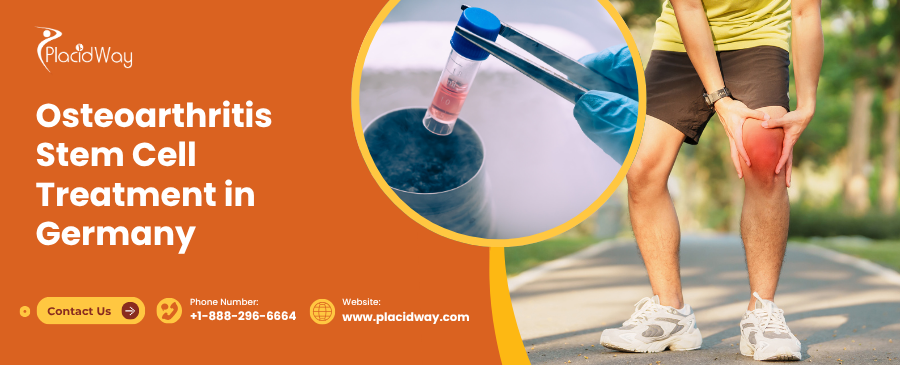
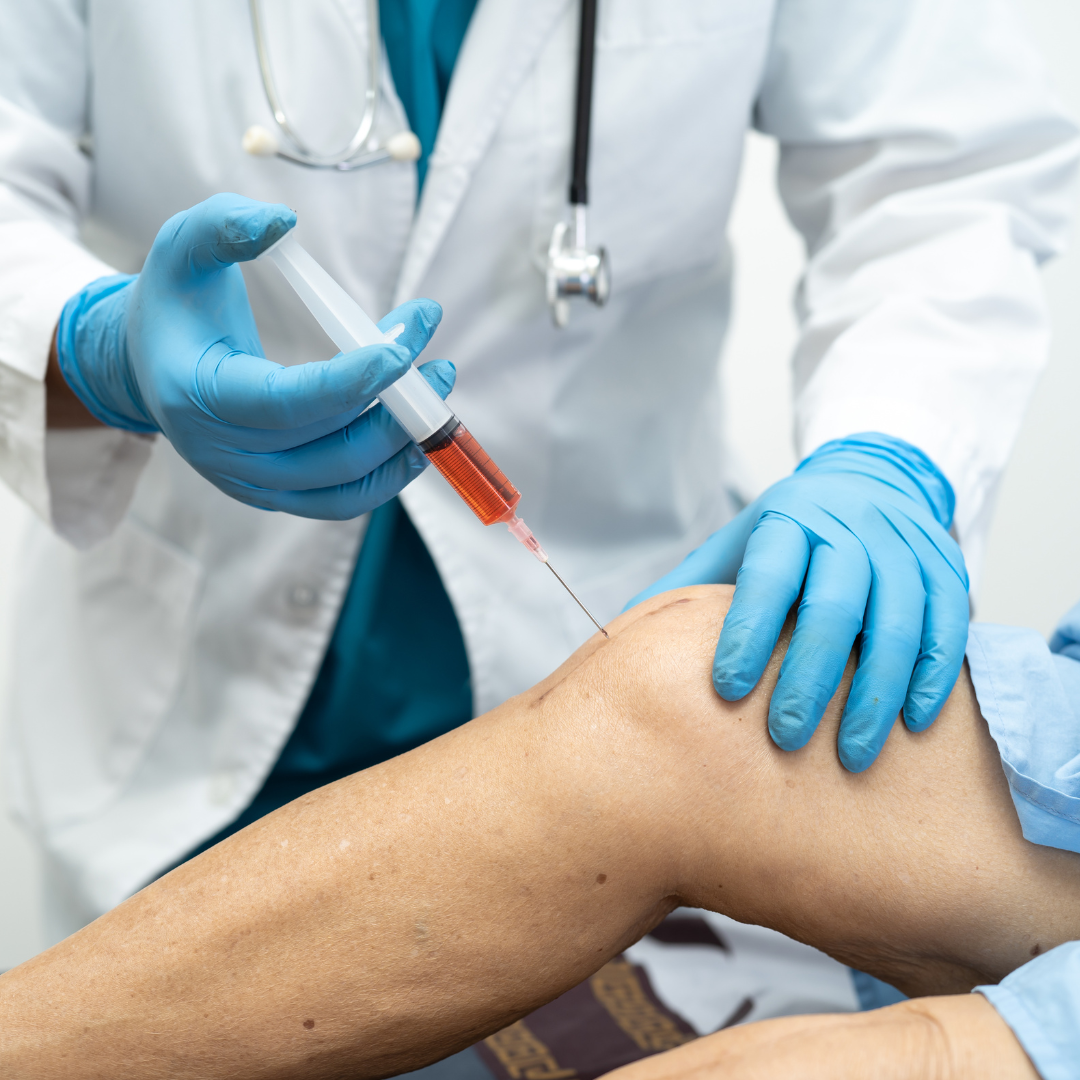


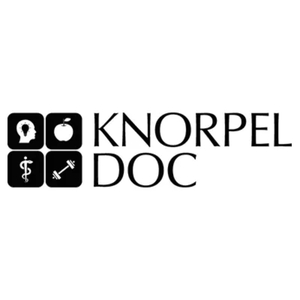







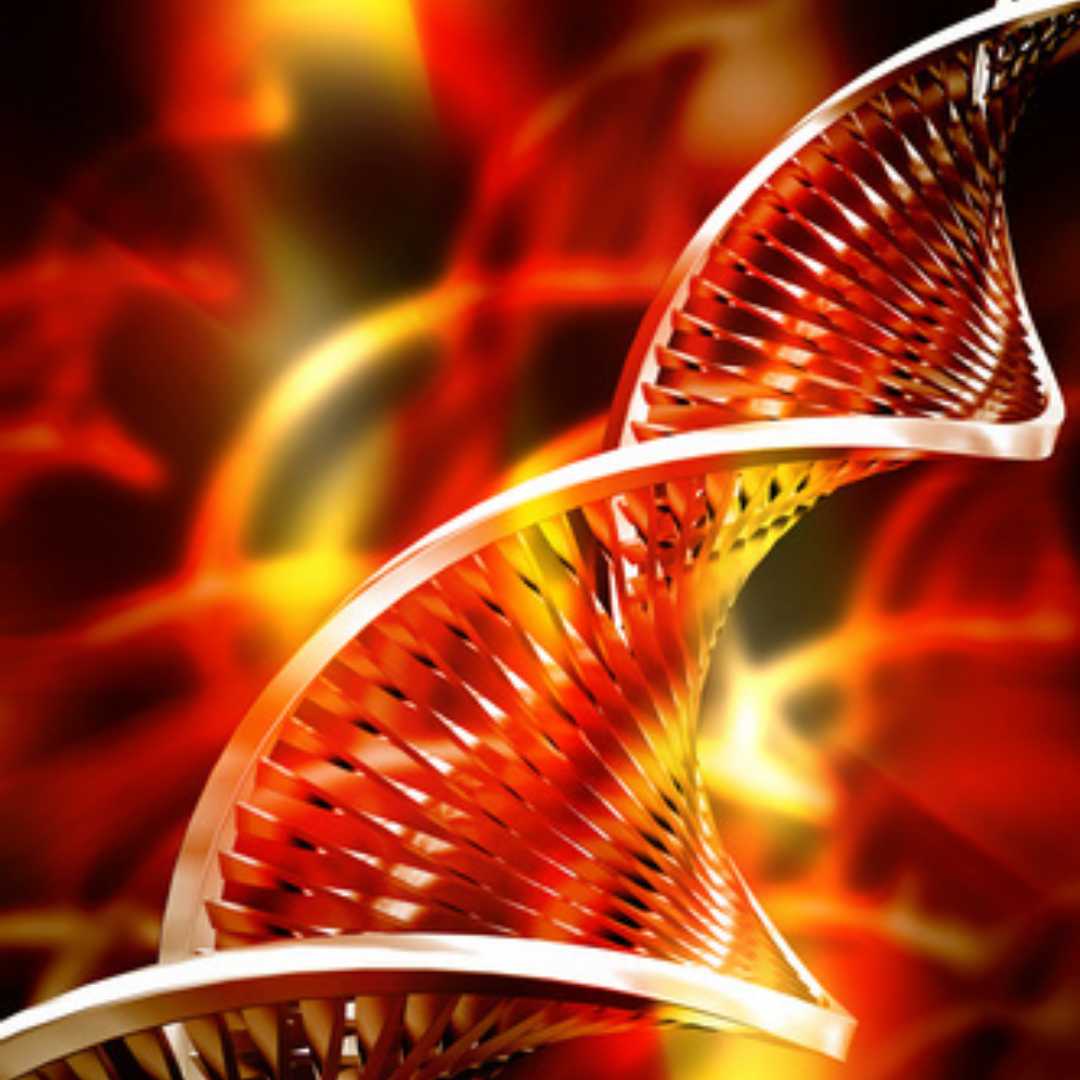

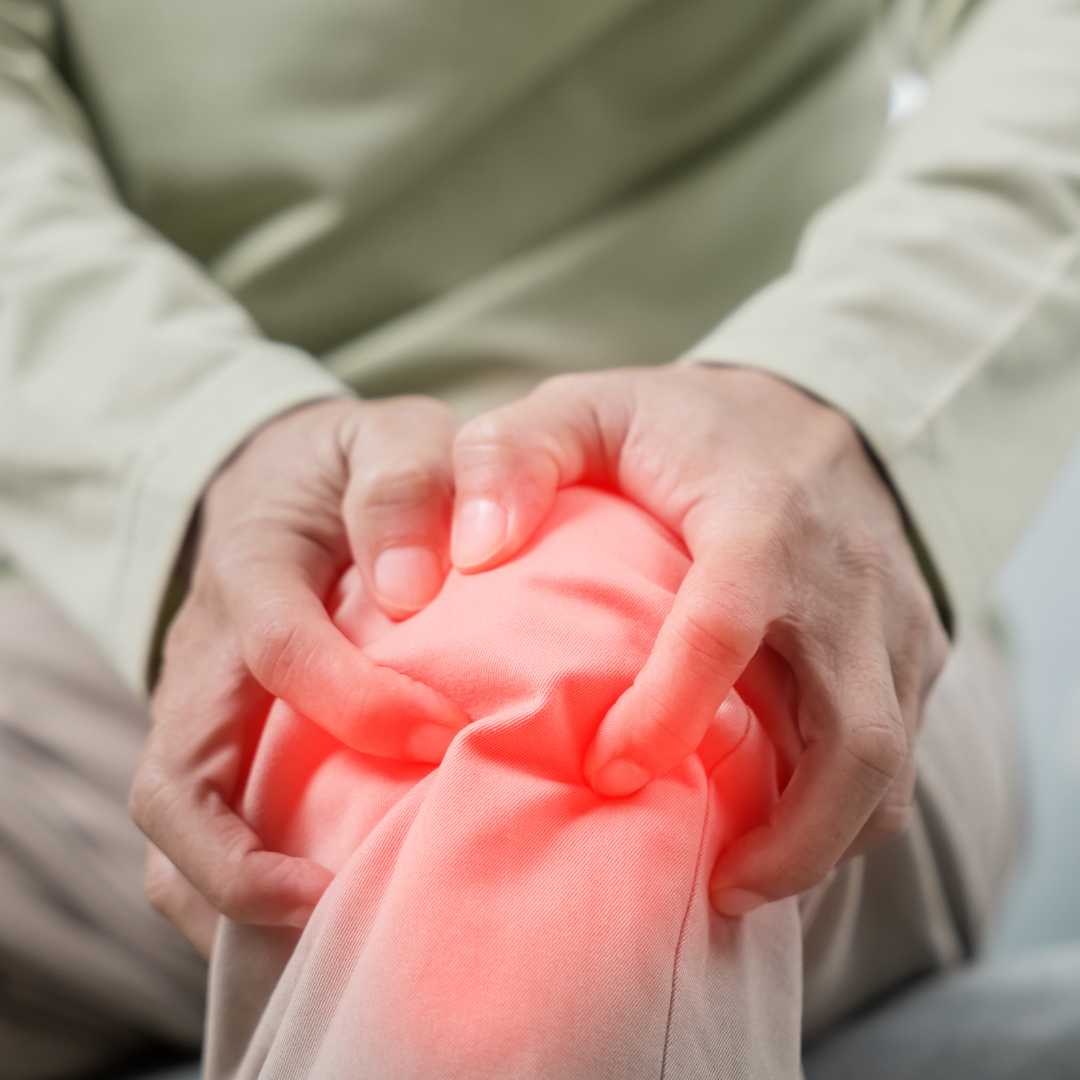
.png)

.png)





Share this listing